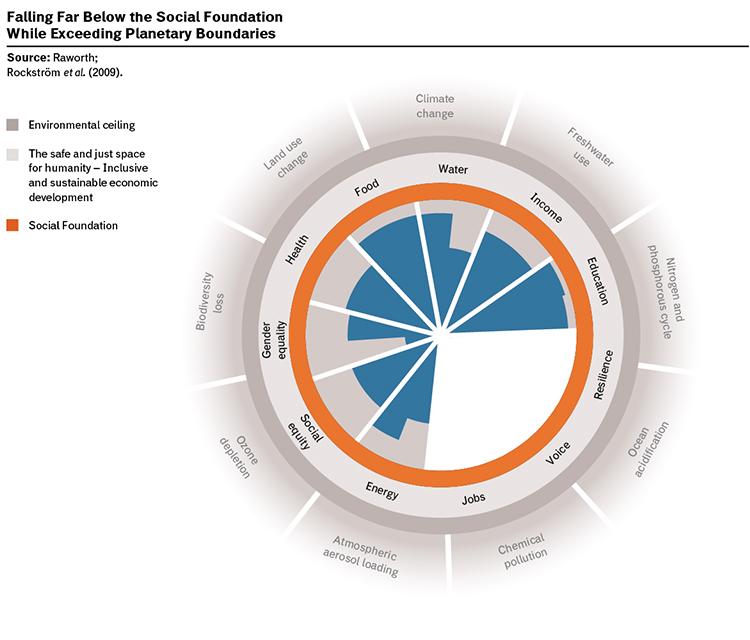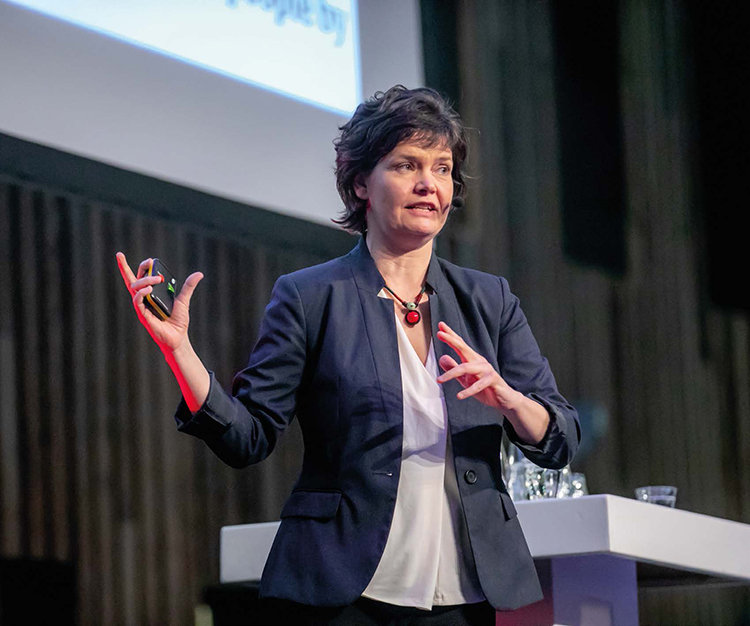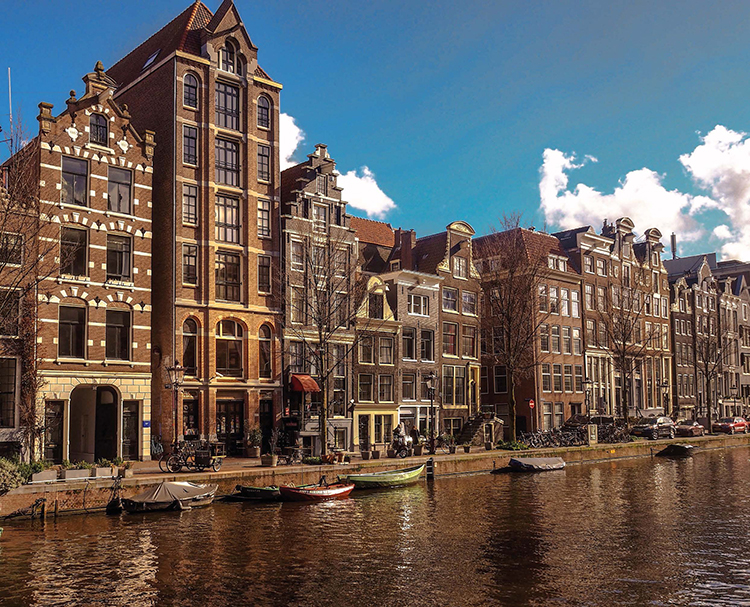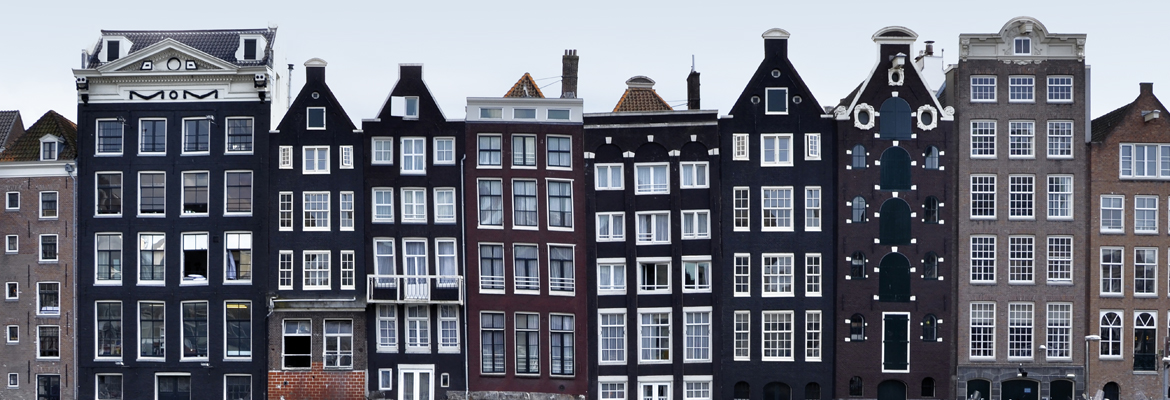Applying principles from Kate Raworth’s Doughnut Economics, more than 40 officials from the city are collaborating with circular economy experts to re-imagine the future for cities. The participants are working together to co-create an agenda for change. Their vision? A circular Amsterdam which works for both city residents and the planet.
Launching the collaboration at We Make The City on June 19, Annerieke Douma, Circle Economy’s director of cities and regions, described how principles from the Doughnut model can guide the creation of urban strategies for a truly thriving Amsterdam. These steps are mapped in a new publication, Building blocks for the new strategy Amsterdam Circular 2020-2025, which sets out a working method to guide development of the city’s circular economy over the next five years.

Thriving People, Thriving Planet
A thriving city will meet the core societal needs of all: from education to health, housing, gender and racial equality. At the same time, thriving cities must safeguard the boundaries of both the local and global environment: to minimise climate change, loss of biodiversity, ocean acidification and so on. This vision of a safe and just space for humanity is represented by the concept of the “Doughnut”, created by Kate Raworth in her 2018 bestseller Doughnut Economics.
To date, cities fall short of this ambition. Warnings of climate change are increasingly severe, while gaps of wealth inequality and circularity continue to rise. To meet the challenges of the 21st Century, we need a tool fit for our increasingly urbanised 21st Century. By bringing the Doughnut to the city, policy-makers can re-imagine urban prosperity within a framework that balances local vision with global responsibility.
 |
|
Kate Raworth |
Vision for a Thriving City
The Doughnut model, pioneered by Kate Raworth, represents a “safe and just space” for humanity within planetary boundaries – a concept that combines economic and ecological analysis with a practical approach rooted in design thinking. Harnessing the pragmatism of city planners, Amsterdam is the first city to apply the Doughnut for the purposes of policy innovation.
In a series of workshops guided by Circle Economy and Kate Raworth, city representatives from various municipal departments – from health to environment, housing to mobility – worked together to define the trajectory for a thriving city.
Each city official brought departmental targets from Amsterdam’s city vision, a total of 49 goals. Mapping each of these targets onto the Doughnut, municipal departments which often work in isolation, were able to locate the social and ecological connections within urban policies. For example, how might the city’s greenery influence the health of citizens? What impacts might boosting food security have on greenhouse gas emissions?
The workshop sessions were designed from the ground up, with elements of gamification to encourage co-creation. City officials tackled pressing local challenges in education, energy, health and recycling – to reveal new synergies and solutions.
Circular Strategies
For Amsterdam, or any other city, an environment that respects both local and global ecological boundaries can only be achieved through a circular economy. This entails new possibilities to create local value and sustainable jobs, for example in “closing the loop” to harvest, recycle and re-use natural resources. At the same time, it is crucial to ensure that circular economy policies work for all citizens.
Applying the values and criteria outlined in the Doughnut has given city officials an analytical compass to navigate circular initiatives that contribute positively to both the social and ecological prosperity of the city. Focused on three priority value chains – Biomass and Food, Construction, Consumer Goods – the collaborative process developed 17 circular policy initiatives for Amsterdam. These span the diversity of the city ecosystem:
- Circular food production in urban and peri-urban areas: local initiatives in regenerative food production, such as Pluk!, foster local nutrient cycles while creating business opportunities for local communities;
- Prevent over-consumption and minimise use of fast-moving consumer goods: Innovative businesses, such as Bundles’ household appliances-as-a-service model, promote access over ownership. By extending the life of materials, city residents gain access to a range of quality products, while reducing overall resource consumption;
- Circular building development through flexible zoning and regenerative design: to promote sustainable and healthy lifestyles for all, urban districts should adapt to evolving area-specific demands in the provision of regenerative energy, water and waste systems, such as Buiksloterham in Amsterdam Noord.
 |
|
millionairemob/Pixabay |
Amsterdam Circular 2020-2025
The process and outcomes from the Amsterdam workshops are summarised in Building blocks for the new strategy Amsterdam Circular 2020-2025, a new report exploring the circular opportunities which cut across municipal departments.
By breaking down silos and facilitating cross-cutting collaboration, the process is as powerful as the Doughnut model itself. To build on this work, Circle Economy, Kate Raworth and the City of Amsterdam have kicked-off a new phase of workshops with city residents.
Involving local Amsterdammers at this early stage in the ideation of circular strategies will test the relevance of the policy environment to the daily lives of residents. This next phase of collaboration will, it is hoped, enable the emerging policy approach to take root in, and be enriched by, the character and culture of the city.
We Make The City, https://wemakethe.city/en
Building blocks for the new strategy Amsterdam Circular 2020-2025, www.circle-economy.com/amsterdam-city-doughnut
Kate Raworth, Doughnut Economics, Penguin 2017, www.penguin.co.uk/books/110/1107761/doughnut-economics/9781847941398.html
www.amazon.co.uk/Doughnaut-Economics-Seven-21st-Century-Economist/dp/1847941397
Pluk!, http://plukcsa.nl/en/home
Bundles, https://bundles.nl/en
Circular Buiksloterham, https://amsterdamsmartcity.com/projects/circulair-buiksloterham
Immagine in alto: na4ev/Pixabay


